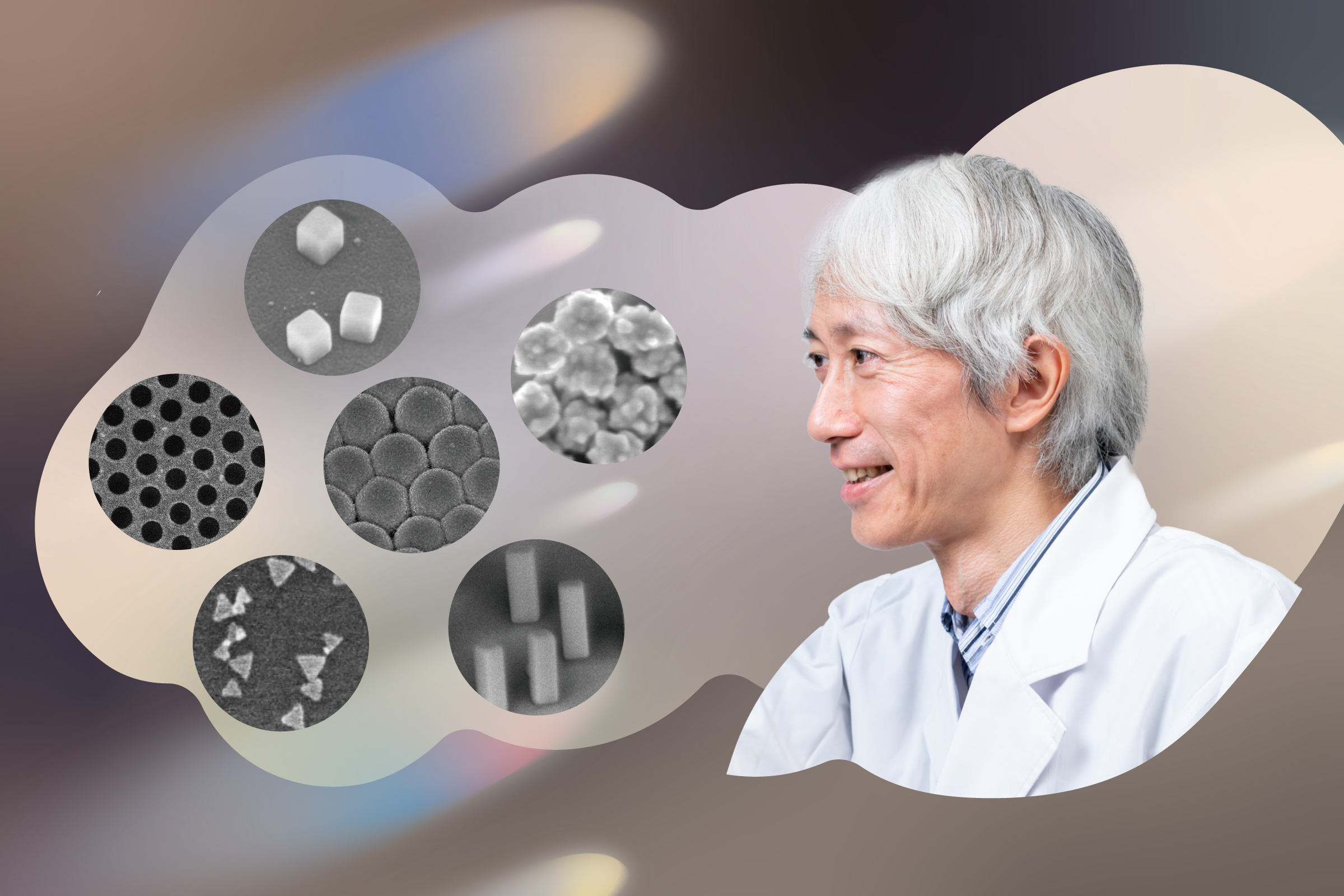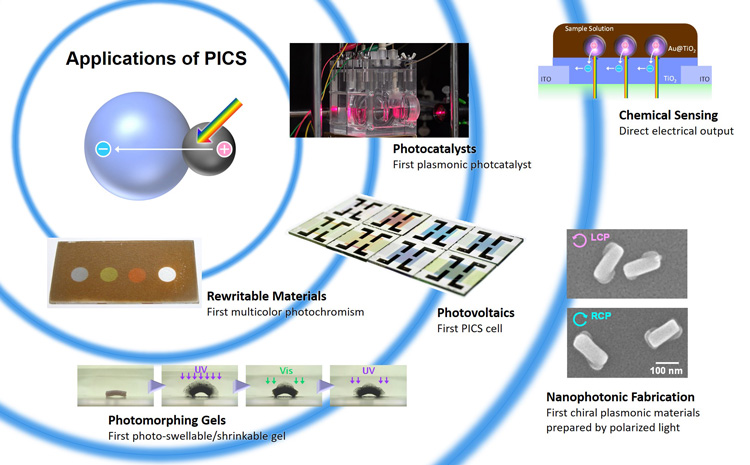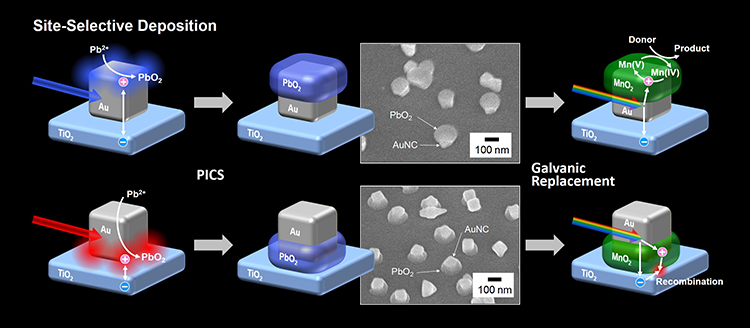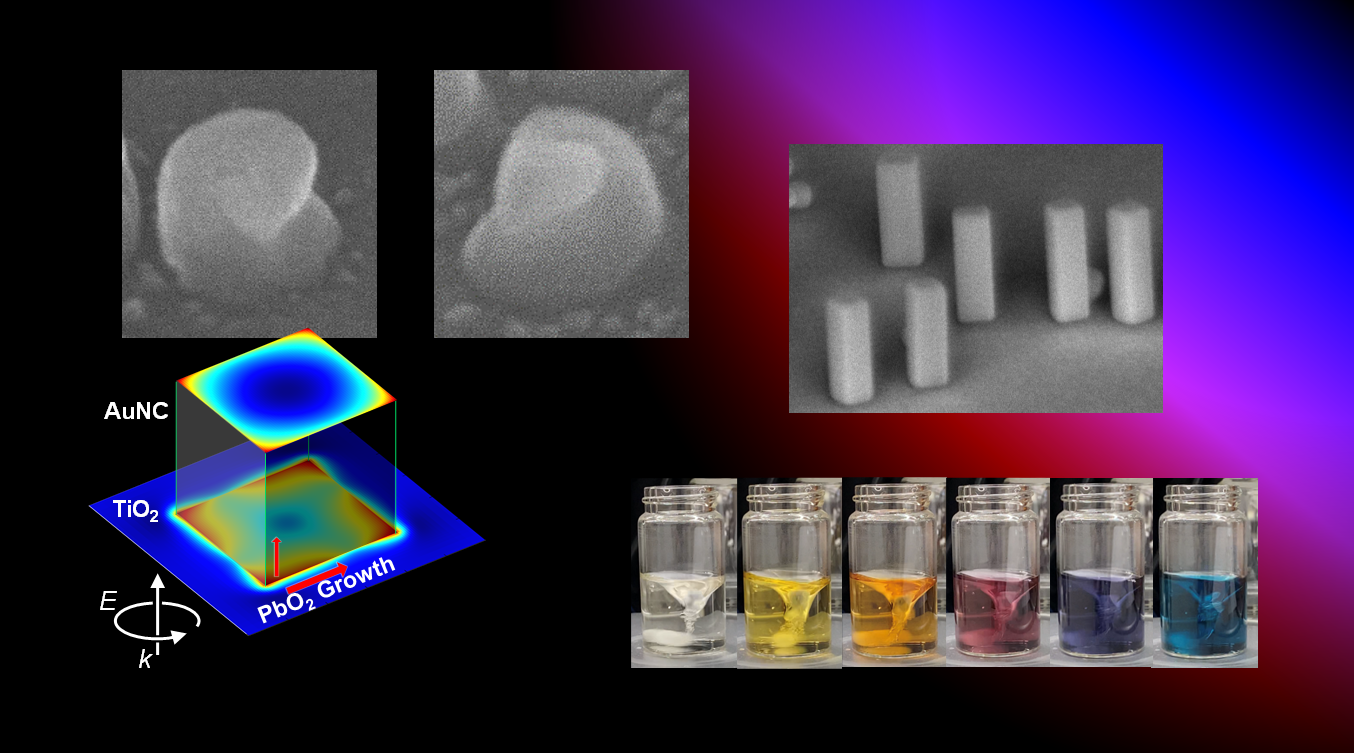Mastering Light Manipulation through Nanomaterials
Advancing Photonic Science and Technology Through the Discovery of Novel Interactions Between Nanoparticles and Light

Japan is one of the world leaders in materials science–an area of research that integrates knowledge from various disciplines, including chemistry and physics, to design, develop, and evaluate new materials that contribute to society. The country has made invaluable contributions toward photocatalysts, carbon fibers, carbon nanotubes, and blue LEDs, all of which are widely used materials in our daily lives. Our institute–UTokyo-IIS–has also contributed significantly toward such developments.
One of the core techniques in modern materials science is the ability to control substances at the nanoscale. At our institute, Professor Tetsu Tatsuma is conducting research aimed at developing nanomaterials with unprecedented functions.
Plasmon-Induced Charge Separation Transfers Electrons from Nanoparticles to Semiconductors
Professor Tatsuma focuses on the ability to manipulate light at will. A variety of functions can be realized by controlling and utilizing the interaction between light and nanostructures.
Tatsuma mainly deals with very small metal particles, called metal nanoparticles, which are less than 100 nm in size. These metal nanoparticles are smaller than the wavelength of visible light (approximately 380 nm to 750 nm).
Light is a type of electromagnetic wave, and it propagates through space as a vibration of electric and magnetic fields. When light hits metal, it is typically reflected by the metal’s free electrons.
However, metal nanoparticles absorb light owing to a phenomenon called “plasmon resonance,” whereby the oscillation of the free electrons in the metal nanoparticles resonates with the oscillation of the light’s electric field. Depending on the size and shape of the nanoparticle, different wavelengths of light can resonate. This is similar to how violins produce high-pitched (short-wavelength) sounds, whereas double basses produce low-pitched (long-wavelength) sounds. This means that it is possible to create nanoparticles that resonate with specific colors of light by controlling their size and shape.
In 2003, Tatsuma’s group discovered a new phenomenon involving plasmon resonance. It was found that upon combining metal nanoparticles with semiconductors, plasmon resonance causes electron transfer from the nanoparticles to the semiconductor, resulting in the separation of positive and negative charges. This phenomenon was named “plasmon-induced charge separation” (PICS) by Tatsuma, who continues to study the mechanism and its potential applications.

Image: Professor Tetsu Tatsuma
Development of Solar Cells and Photocatalysts with Novel Operating Mechanisms
One of the main applications of PICS is photocatalysis. Photocatalysts are materials that can trigger chemical reactions using energy from light. This concept is based on a phenomenon discovered at our institute by the distinguished Prof. Akira Fujishima of the University of Tokyo. Currently, many practical photocatalysts use titanium dioxide. However, this material can only absorb ultraviolet light. Metal nanoparticles could allow the utilization of various other wavelengths of light for photocatalysis.
Essentially, PICS uses light energy to separate positive and negative charges, thereby allowing the induction of oxidation and reduction reactions, respectively, using visible light. Additionally, if these positive and negative charges are collected separately, they can be converted into electricity. Tatsuma and his team have already combined gold or silver nanoparticles with semiconductors such as titanium dioxide to develop “plasmon photocatalysts,” solar cells, and photodetectors, thereby laying the foundation for various applications.
Creating Complex Nanomaterials from the Bottom Up
PICs can further be used to create intricate nanostructures. In conventional light-based processing, there is a limitation called the “diffraction limit,” which prevents the manipulation of features smaller than the wavelength of light. However, by using plasmon resonance, light can be confined as “optical near-field,” around particles smaller than the wavelength of light. Optical near-field is similar to light, but it does not propagate and is present around the surface of an object at a distance of less than one wavelength of light.
For example, when silver nanocubes are placed on titanium dioxide and illuminated with light of a specific wavelength, their position can be selected such that the optical near-field is confined. When positive and negative charges are separated at the confined position, the positive charges can be used to induce oxidation reactions. In this manner, metal oxides can be attached to specific positions by oxidizing metal ions in a solution. By placing metal oxides that promote chemical reactions at advantageous positions, we can improve the efficiency and selectivity of plasmon photocatalysts.
The technique of creating nanostructures by stacking atoms or molecules through chemical synthesis is called the bottom-up method. Currently, the most widely used nanofabrication techniques are top-down methods, which involve processing large materials to create the desired nanomaterial. However, such methods require large and expensive equipment, resulting in significant costs, time, and energy consumption.
Discussing the advantages of the bottom-up method, Tatsuma says, “Top-down methods require high cost and energy, and it is difficult to achieve fine and complex three-dimensional structures beyond the diffraction limit. Using the bottom-up approach, we can achieve low-cost fabrication of nanoscale three-dimensional structures, making mass production much easier.”

Image: Professor Tetsu Tatsuma
Yearning to Discover Applications Unique to Each Phenomenon
Tatsuma has collaborated with many universities and companies through joint research. He believes that collaborations are not only a shortcut to practical applications and commercialization but also an opportunity to understand one’s role in research and academia.
Tatsuma spoke about his motivation for research, saying, “Rather than taking it upon ourselves to produce practical applications, I believe that it is our job to find new phenomena and elucidate the mechanisms behind them to pave the way for applications. I yearn to discover new materials and find applications unique to these phenomena.”
Tatsuma expects that nanomaterials capable of controlling light will have potential applications in the future as metamaterials. Metamaterials are materials with properties beyond those found in natural materials, such as the ability to control light freely. They have drawn attention as a technology that can lead to ultra-high-resolution lenses, glasses that overlay artificial images on actual views, and transparent spaceships that appear in science fiction, among others. Although the use of metamaterials to control visible light, which has a relatively short wavelength as compared to other electromagnetic waves, is difficult at present, the goal of discovering potential applications is what drives Tatsuma. His efforts aim to create nanomaterials that interact more strongly with light by utilizing the interaction between visible light and metal nanoparticles and connecting them to metamaterials.
Tatsuma shares his aspirations for the future, stating, “It may take time to bring metamaterials to practical fruition, but I am, nevertheless, committed to continuing my research while I determine the most effective path forward to ensure that my research will lead to such new technologies.”

Image: Professor Tetsu Tatsuma
Related Articles> Polarized Light: A Simple Route to Highly Chiral Materials


Comments
No comments yet.
Join by voting
How did you feel about the "Possible Future" depicted in this article? Vote on your expectations!
Please visit the laboratory website if you would like to learn more about this article.
Share